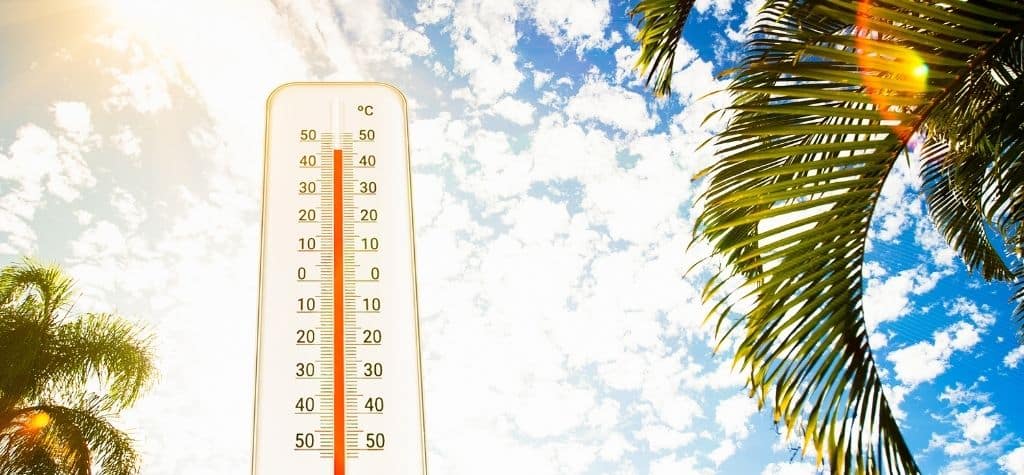The weather influences more than just your daily comfort—it also plays a significant role in your eye health. Whether it’s scorching heat, cold winds, heavy rainfall, or intense UV exposure, different weather conditions can cause irritation, infections, and even long-term vision damage.
Understanding how weather affects your eyes allows you to take proactive steps to protect your vision. In this article, we’ll explore five major ways weather impacts eye health and what you can do to keep your eyes safe all year round.
How Extreme Heat Affects Your Eyes

Hot weather, especially in summer, can cause several eye-related problems, including:
1. Dry Eye Syndrome
High temperatures and air conditioning can lead to increased tear evaporation, making your eyes feel dry, irritated, and itchy.
2. Increased Risk of Eye Infections
Sweat and bacteria buildup around the eyes can lead to infections like conjunctivitis (pink eye).
3. Dehydration and Tear Production
Not drinking enough water in hot weather can reduce tear production, making dry eyes worse.
How to Protect Your Eyes in Hot Weather:
- Stay hydrated by drinking plenty of water.
- Wear wraparound sunglasses to reduce direct sun exposure.
- Use lubricating eye drops if your eyes feel dry.
The Impact of Cold Weather on Eye Health
Cold weather can be just as harmful to your eyes as hot weather. Here’s how:
1. Watery Eyes in Cold Temperatures
Cold air can trigger excessive tearing, making vision blurry and uncomfortable.
2. Dry Indoor Air and Eye Irritation
Heating systems can lower indoor humidity, leading to dry, irritated eyes.
3. Winter UV Exposure and Vision Damage
Snow reflects up to 80% of UV rays, increasing the risk of photokeratitis (corneal sunburn).
How to Protect Your Eyes in Cold Weather:
- Use a humidifier indoors to maintain moisture.
- Wear UV-protective sunglasses, even in winter.
- Use artificial tears to combat dryness.
Rainy and Humid Conditions: Risks to Your Eyes

Rain and high humidity can create an environment where bacteria and allergens thrive, leading to eye issues like:
1. Eye Infections from Bacteria and Fungi
Rainwater can carry dirt and germs, increasing the risk of eye infections.
2. Fogging of Eyeglasses and Vision Obstruction
Sudden temperature changes cause glasses to fog up, reducing visibility.
3. Allergens and Pollutants in Humid Air
High humidity levels can worsen allergies, leading to itchy, red, and watery eyes.
How to Protect Your Eyes in Rainy Weather:
- Avoid touching your eyes with wet or dirty hands.
- Use anti-fog coatings or wipes for eyeglasses.
- Keep allergy eye drops on hand if you suffer from seasonal allergies.
Wind and Its Effect on Eye Comfort
Windy conditions can lead to several eye problems, including:
1. Exacerbation of Dry Eye Syndrome
Wind can dry out the eyes by increasing tear evaporation.
2. Exposure to Dust and Debris
Wind carries dust, pollen, and other particles that can irritate or scratch the eyes.
3. Best Eyewear for Windy Conditions
- Wraparound sunglasses protect against wind and debris.
- Wearing moisture-chamber goggles helps in extremely dry environments.
UV Exposure in Different Seasons

Many people believe that UV protection is only necessary in summer, but UV rays are present all year long.
1. Summer vs. Winter UV Risks
- Summer: Direct UV exposure can cause eye sunburn and long-term damage.
- Winter: UV rays reflect off snow, increasing the risk of corneal burns.
2. UV Rays and Long-Term Eye Damage
Prolonged exposure to UV light contributes to cataracts, macular degeneration, and even eye cancers.
3. How to Stay Protected
- Wear UV400 sunglasses year-round.
- Use a wide-brimmed hat for additional protection.
- Limit sun exposure, especially between 10 AM and 4 PM when UV rays are strongest.
How to Protect Your Eyes from Weather-Related Damage
1. Wear the Right Eyewear
- Use UV-blocking sunglasses in both summer and winter.
- Consider goggles in extreme windy or dusty conditions.
2. Keep Your Eyes Hydrated
- Drink enough water daily.
- Use artificial tears to combat dryness.
3. Pay Attention to Changing Weather Conditions
- Protect your eyes based on seasonal risks.
- Be aware of allergens and pollutants in the air.
Common Myths About Weather and Eye Health

- “Cold weather makes your eyes weaker.” – Temperature alone doesn’t harm eye strength, but extreme conditions can cause discomfort.
- “Rain washes away eye infections.” – Rainwater can carry bacteria, increasing infection risks.
- “You don’t need sunglasses in winter.” – Snow and clouds can reflect UV rays, making eye protection essential year-round.
FAQs About Weather and Eye Health
Can hot weather cause blurry vision?
Yes, excessive heat and dehydration can affect tear production, leading to blurry vision.
Why do my eyes tear up in the cold?
Cold air triggers reflexive tearing to protect the eyes from dryness.
Can the wind damage my eyes permanently?
Chronic exposure to wind can lead to long-term dry eye syndrome, but protection can help prevent permanent damage.
Conclusion: Year-Round Eye Protection Matters
The weather plays a significant role in eye health, from extreme heat to harsh winds and UV exposure. By taking proactive steps—like wearing the right eyewear and keeping your eyes hydrated—you can maintain optimal vision in any climate.

